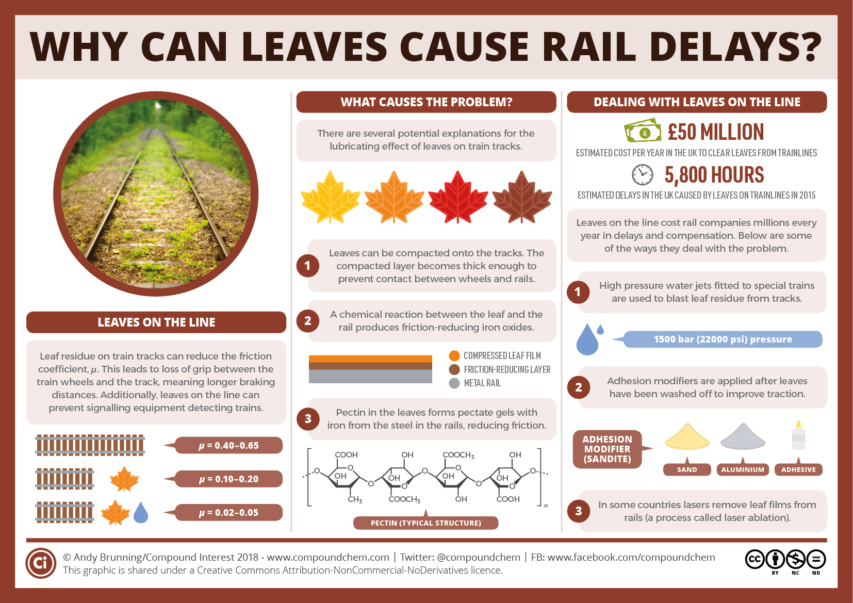While it doesn’t explain the “wrong type of snow” excuse also deployed by announcers when Britain’s trains run inexplicably slow in winter, here’s the scientific facts about the “leaves on the line” excuse:
Autumn is here, and for most of us, it’s a time of beauty as the leaves cascade through an array of hues before pirouetting down from the trees. If you have to travel by train, however, you might tire of ‘leaves on the line’ being the supposed cause of train delays. It turns out to be more than just a flimsy excuse – and particular chemical reactions are partly to blame.
We’ve previously looked at the chemical cause of the colours of autumn leaves. By the time they make their descent from trees to the ground, most of these colours have passed. What remains is a brown husk, mainly made up of cellulose. Cellulose is the biological polymer that is the main component of plant cell walls.
Once leaves have fallen from trees, they simply decompose over time. Their presence isn’t usually a problem until it comes to the train network. When leaves fall on train lines, they can reduce the grip between the train wheels and the track. This, in turn, can lead to longer braking distances for trains. By disrupting the contact between the train wheels and the track, the leaves also prevent signalling equipment detecting trains. This can then cause train delays.
What makes leaves affect train tracks in this way? Scientists have a few suggestions, and it’s likely that they all contribute to the problem to some extent.




